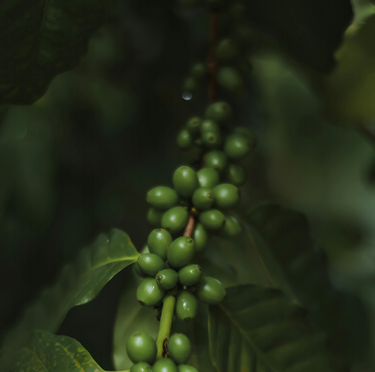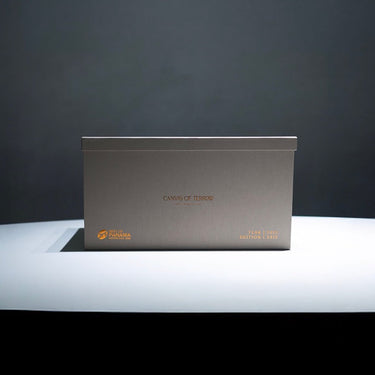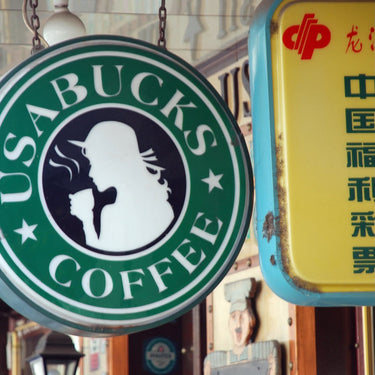Join us as we continue our coffee travels, from the comfort of your own home. This time it’s Turkey, and the ever so strong and traditional Turkish coffee which is known globally for its outstanding taste and full body, (also for the epic presentation). One sip of this will transport you from Ipswich to Istanbul in a hot minute!
With a rich history, Turkish coffee is most often seen as a ritual and experience. Coffee first arrived in Turkey in 1555, brought into the country by two Syrian traders, and subsequently by the mid-17th century, coffee had found its place central to the Ottoman Court’s opulent and lavish ceremonies.
Today, coffee is happily a lot more accessible and part of everyday life, coffee culture is daily yet still tied to tradition, particularly marriage. Fun fact, at more formal engagements, Turkish coffee is served by the bride-to-be to mark the occasion. We couldn’t think of a better reason to incorporate your daily brew!
However, less about the yesteryear, let’s discuss how you can recreate the magic of the Turkish coffee houses in the present.
How To Make Turkish Coffee - Table of Contents
- What Kind of Coffee/Roast Should I Buy to Make Turkish Coffee?
- RAVE's Turkish Coffee Recipe
- Ingredients:
- Instructions:
- Tips:
- How To Make Turkish Coffee Without a Cezve
- Choose Your Vessel
- Grind Beans to Perfection
- Stir Up Magic
- Simmer and Stop
- Pour and Party
- Turkish Coffee Serving tips
- Selecting the Right Coffee Beans for Turkish Coffee
- The Significance of the Foam
- Reading the Future in Turkish Coffee Cups
- Turkish Coffee - Frequently Asked Questions!
- What makes Turkish coffee so different?
- Can you make Turkish coffee without an ibrik?
- Can Turkish coffee be made in a French press?
- Do you put milk in Turkish coffee?
- What is the proper way to drink Turkish coffee?
What Kind of Coffee/Roast Should I Buy to Make Turkish Coffee?
First up, for the most authentic experience you will need to get your hands on a special finely ground coffee. These are usually quality Arabica beans from Central America or Brazil. The beans are firstly blended and then roasted to a medium-light level before they are ground to a very fine consistency.
You can buy coffee beans online at RAVE!
RAVE's Turkish Coffee Recipe
Wondering how to make Turkish coffee properly? Well strap in my coffee-loving friends! Let us walk you through how to brew up a stupendously-authentic cup of Turkish coffee.
Ingredients:
-
2 heaping tablespoons finely ground Turkish coffee (an extra-fine powder consistency)
-
1 cup cool water
-
Sugar (optional)
-
Cardamom or mastic (optional spices)
Instructions:
-
Use a small copper cezve pot or saucepan. Add the ground coffee directly into the empty pot. If using sugar, add up to 1 teaspoon at this stage based on taste preference.
-
Slowly pour in the cool water and stir gently with a long handled spoon. The coffee grounds will float to the top at first.
-
Place the cezve over medium-low heat. Do not stir anymore. Wait for the coffee to come just barely to a boil. Watch for foam to start rising.
-
Right before the foam starts spilling over, remove from heat. This should take just 2-3 minutes.
-
Pour the coffee slowly into small espresso cups, holding the cezve high above each cup. The grounds will settle to the bottom.
-
Allow to cool for 1 minute before enjoying. Serve with a small sweet treat like Turkish delight and a glass of cold water on the side.
Tips:
-
The foam is essential for taste and tradition.
-
Do not let the coffee actually boil or overextract.
-
Don't drink the thick layer of grounds at the bottom of the cup.
How To Make Turkish Coffee Without a Cezve
Don't fret if you don't have a fancy copper cezve pot on hand! With just a few small adjustments, you can mimic the cezve brewing method using basic kitchen equipment. Here's a step-by-step walkthrough for crafting rich Turkish coffee in a regular saucepan or small pot.
Choose Your Vessel
While a cezve is traditionally used, a small stainless steel saucepan or pot with a long handle can work nicely too. The key things you want are:
-
A heavy-bottomed vessel to distribute heat evenly
-
A capacity of about 3 cups maximum
-
A spout or narrow lip for easier pouring
If you'll be serving multiple people, opt for a slightly larger pan so you can brew a few rounds of coffee successively.
Grind Beans to Perfection
No excuses here people, you need an ultra-fine coffee grind! Use either pre-ground Turkish coffee powder, or pulverize whole beans into a powdery flour-like consistency. This allows for efficient extraction given the quick brew time. Do not attempt a Turkish coffee pot with coarsely ground beans!
An electric spice grinder, blade coffee grinder, or even mortar and pestle can grind beans into Turkish flour. You won't regret the elbow grease once you taste the final product!
Stir Up Magic
Add your fine coffee grounds directly into the empty saucepan first. To sweeten up, throw in sugar now too depending on taste preference! For a true Turkish experience, pour in cool, not hot water. Slowly add it, with a ratio of about 2 heaping tablespoons of coffee to 6 oz water.
Gently stir just to incorporate. If using cardamom or other spices, toss them in whole now as well. Then stop stirring! This allows the grounds to sink and the coffee oils to rise for ideal extraction.
Simmer and Stop
Place your make-shift cezve over medium to medium-low heat. Let it heat up gradually, with patience being key. After a few minutes, you'll see bubbling and a frothy foam forming. Watch like a hawk for it to rise but not quite overflow. As soon as it threatens to spill over, immediately remove from heat!
Pour and Party
Leaving the grounds at the bottom, gently pour your freshly brewed Turkish coffee into small serving cups. Pop in a sugar cube if desired. Allow to cool just slightly before enjoying this steamy, fragrant brew with some traditional Turkish Delight!
Turkish Coffee Serving tips
Add a glass of water, to reset the palette at first, and something sweet. Keep it super traditional and opt for Turkish delight. We also recommend saving the coffee grains at the bottom (don’t drink unless you like extremely bitter aftertaste!) Traditionally the remaining coffee is used to tell your fortune, who knows what your Turkish coffee experience might tell you?!
Selecting the Right Coffee Beans for Turkish Coffee
Choosing the perfect coffee beans is key to an authentic Turkish coffee experience. Look for a medium or dark roast Arabica coffee bean, ideally from Central or South America. The beans need to be ground extra-fine - to the consistency of powdered sugar. This allows efficient extraction when the ground coffee is immersed right in the water. If you can’t find pre-ground Turkish coffee powder, use an espresso grind. Alternatively, you can grind beans into a fine powder using a spice grinder or blade coffee grinder.
The Significance of the Foam
When making Turkish coffee, the foam (kaymak) carries tremendous cultural weight. It's essential to let the coffee come just to a boil so that the foam rises, but remove from heat before it overflows. The foam is thought to indicate the skill, senses and care of the coffee maker. A good foam is said to be the marker of a well-made cup of Turkish coffee.
Fact - one tradition involved women of a harem making coffee for their would-be husbands, with the man choosing his bride based on who made the best Turkish coffee.
Reading the Future in Turkish Coffee Cups
After finishing your Turkish coffee, tradition calls for flipping over the cup and letting it cool before “reading” the patterns of the coffee grounds stuck to the side and bottom of the cup. This Turkish custom of fortune telling or tasseography has been practiced for centuries.
The grounds form shapes and symbols that a trained coffee reader can interpret to predict your fortune. Generally, shapes on the side of the cup represent the near future, while shapes on the bottom symbolise the distant future. Make some coffee with friends and have fun decoding your Turkish coffee cup patterns and fortunes!
Turkish Coffee - Frequently Asked Questions!
What makes Turkish coffee so different?
Turkish coffee is in a league of its own! That ultra-fine powdery grind allows a deep, bold extraction when brewed directly with water. And don't even get me started on that scrumptious foam - it's a mark of pride, not to be spilled!
The flavours too are distinct, with cardamom and other spices mingling with those dark roasted beans. Plus, don't forget that whole ritual of reading your fortune from the grounds when you're done sipping!
Can you make Turkish coffee without an ibrik?
Fear not if you lack the traditional ibrik. With some simple tricks, you absolutely can mimic its concentrated brewing process in any small heavy-bottomed pan.
The key is getting an ultra-fine grind on those beans and taking it nice and slow over low heat to let the coffee properly extract. Watch for foam and remove right before it spills...presto, Turkish style coffee!
Can Turkish coffee be made in a French press?
A French press isn't well suited for making authentically thick and potent Turkish coffee. The grind size would need to be too fine and might clog up the plunger screen.
Plus the brewing temps and times don't align properly! But not too worry - with the right beans and technique, similar strong concentrated coffee can be easily made without any fancy equipment using just a basic pan on your stove.
Do you put milk in Turkish coffee?
Nope! Traditional Turkish coffee is always prepared using just coffee grounds and water, without any milk added. At most, you might see a little sugar incorporated to taste during the brewing process.
Those bold flavours come from proper extraction, not dilution or masking! Once brewed, Turkish coffee is served black in tiny cups or glasses alongside a cool glass of water and treats like Turkish delight candy.
What is the proper way to drink Turkish coffee?
To best enjoy Turkish coffee, let your little brewed Turkish coffee cup cool for just a minute before sipping so you don't burn your tongue! Drink slowly to let the intense flavours shine.
Do not swallow that muddy layer of grounds at the bottom or you'll end up with a gritty mouthful of overextracted bitterness. Once your Turkish coffee cup is nearly empty, you can have fun turning it upside down on the saucer to peek at the future based on how the grounds settle!
Finish your experience alongside a sweet treat and discussion about what fortunes await.






